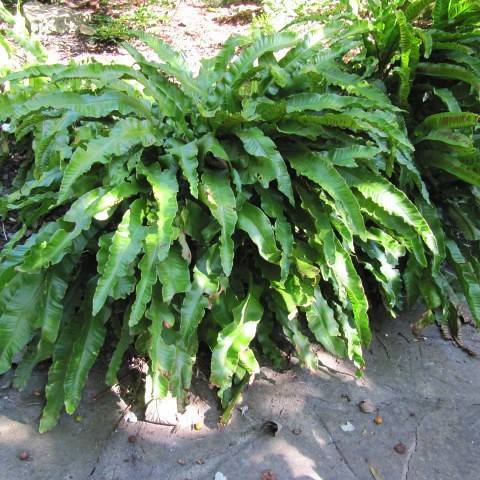
Hart's Tongue Fern
Asplenium scolopendrium var. americanum
Also Known As - American Hart's Tongue FernWatering:
Minimal
Hardiness Zone:
6
Sun:
Sun, Partial Shade
Soil:
Sand, Loam
Leaf:
Yes
Growth Rate:
Low
Drought Tolerant:
Yes
Salt Tolerant:
Yes
Care Level:
Medium
watering
Watering frequency for Wall Rue depends on the season and the plant's location. In summer, this plant should be watered once a week; during winter, watering should be reduced to once every 2 weeks. The amount of water should be adequate to keep the soil moist, but not soaked. In periods of low or no rainfall, additional water may be needed. Ensure that the water is not overly wet or muddy, as excess moisture can lead to fungal issues. Additionally, watering Wall Rue early in the morning will ensure that the leaves have adequate time to dry out before nightfall.
sunlight
Wall Rue needs bright light most of the day. When grown indoors, a south or west facing window is ideal, as it will provide plenty of light throughout the day. During the summer months, the plant should be moved closer to the window to allow more sunlight to reach the leaves. During the winter months, Wall Rue should be placed a few feet away from the window in order to reduce the chance of sunburn due to the weaker winter sunlight.If possible, try to give Wall Rue some indirect sunlight for a few hours per day, either through a sheer curtain or in a sunny spot that has been shaded by leafy plants.This plant should be protected from direct sunlight during the hottest parts of the day, and it should not be placed outdoors until all danger of frost has passed.
pruning
Wall Rue should be pruned twice a year. Once in late winter, in late February or early March, and once again in early summer, in mid-June. When pruning in late winter, cut away any dead or damaged leaves and stems, as well as any foliage that is poking out from the base. When pruning in early summer, cut back any stems that have become too long or that are growing in an unruly manner. Pruning should only be done in small and subtle amounts. Do not remove any healthy foliage or stems as this will reduce the plant's vigor.
